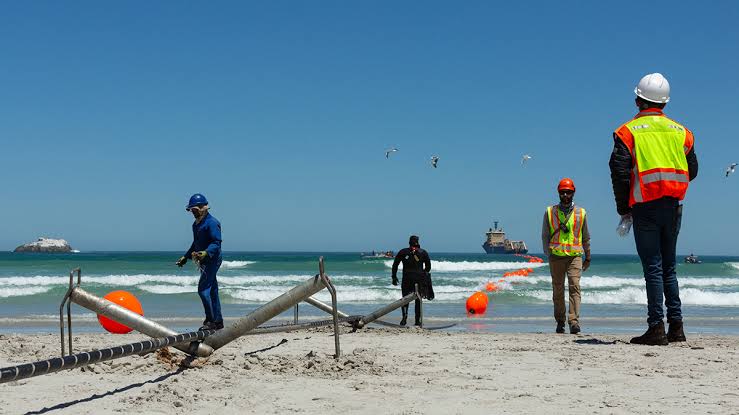
In the wake of epileptic internet access due to undersea cable damages, let’s take a look into scope of this infrastructure in Nigeria. Submarine cables serve as the backbone of Nigeria’s internet infrastructure, powering the connectivity that enables communication and commerce.
Nigeria’s internet landscape is underpinned by a robust network of submarine cables, providing vital connectivity to millions of users across the country.
Currently, there are seven submarine cables facilitating internet access in Nigeria:
1. Natcom Development and Investment Limited (ntel): Formerly known as NITEL, this cable boasts a capacity of 800 gigabits.
2. MainOne Cable: With an impressive capacity of 10 terabits, MainOne is a key player in Nigeria’s internet infrastructure.
3. Glo-1 (Globacom-1) Cable: Owned by Globacom Limited, this cable offers a capacity of 2.5 terabits, contributing significantly to Nigeria’s internet backbone.

4. African Coast to Europe Submarine Cable (Dolphin Consortium): This consortium, comprising Dolphin Telecom, Orange, MTN, and others, provides a total capacity of 12.8 terabits.
5. West African Cable System (WACS): Operated by MTN, WACS boasts a capacity of 14.5 terabits, further bolstering Nigeria’s internet connectivity.
6. Nigeria-Cameroon Submarine Cable System: Owned by Cameroon Telecommunications (CAMTEL) in partnership with MainOne, this cable offers a capacity of 12.8 terabits.
7. Equiano Cable: Owned by Google LLC and the West Indian Ocean Cable Company (WIOCC), Equiano boasts an impressive capacity of 100 terabits.
The latest addition to the undersea cable network is Meta’s 2Africa subsea cable. Expected to land in Lagos and Akwa Ibom, this mammoth project spans 45,000 kilometres, making it one of the world’s largest subsea cable initiatives. Scheduled to go live by the end of 2024, 2Africa will deliver a staggering design capacity of up to 180 terabytes per second (Tbps), surpassing the combined capacity of all existing subsea cables serving Africa.

Notably, 2Africa, owned by MTN, holds the distinction of being the world’s longest underwater cable, traversing three continents and 33 countries, with a significant portion of its route passing through Africa.


